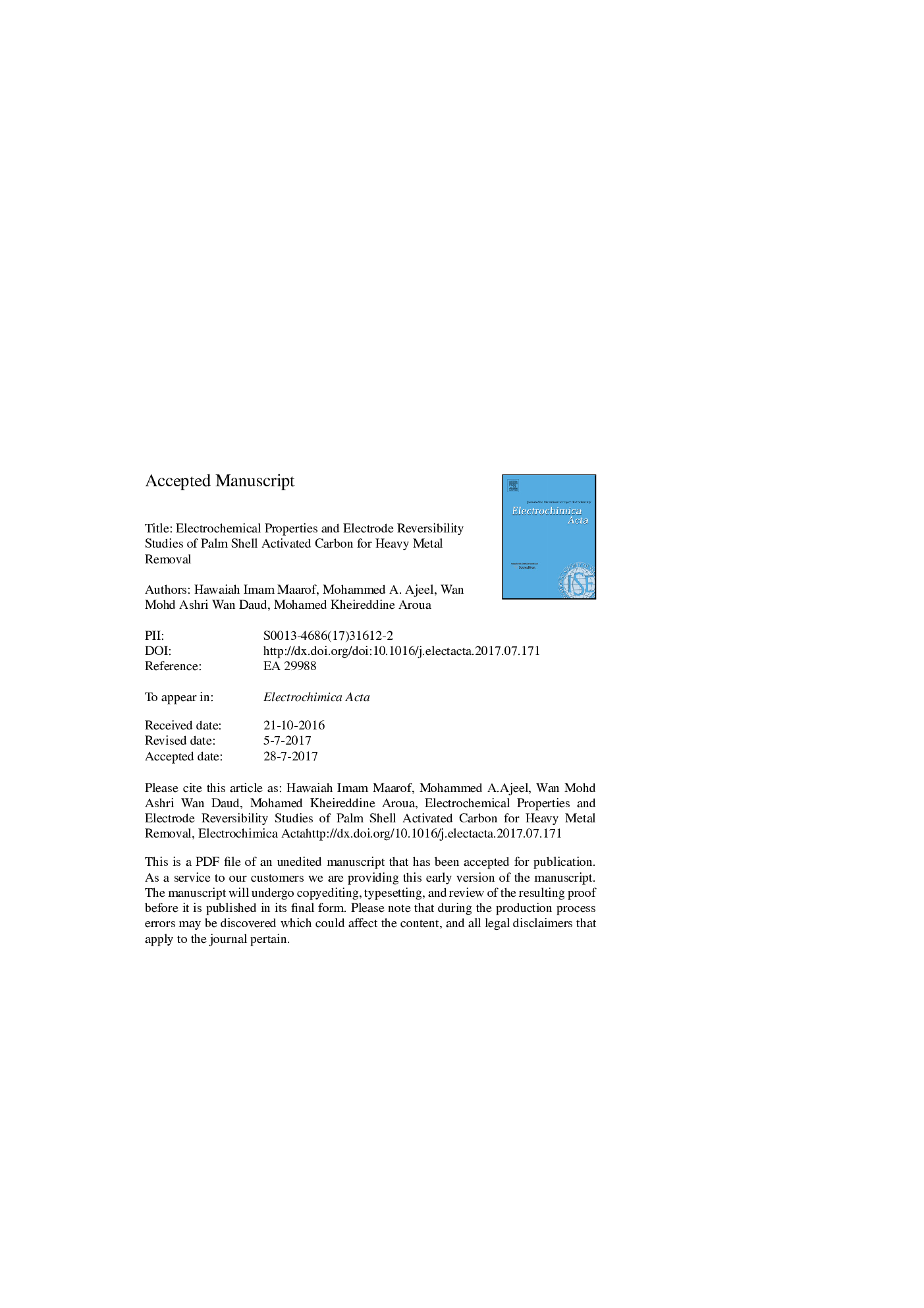| Article ID | Journal | Published Year | Pages | File Type |
|---|---|---|---|---|
| 4766783 | Electrochimica Acta | 2017 | 38 Pages |
Abstract
The feasibility of palm shell activated carbon (PSAC) as an electrode for the purpose of wastewater treatment was studied for the first time using a common redox probe, Fe(CN)64â/Fe(CN)63â in 0.5 NaCl as the supporting electrolyte. Before the electrode reaction studies, the most suitable supporting electrolyte and the optimum percentage of carbon black (CB) was determined. This study reveals that the redox process was quasi-reversible while both PSAC electrodes with 20% and 30% CB showed a relatively low electron transfer resistance. A large background current due to capacitance was observed due to the porous characteristics of the PSAC electrode. A PSAC electrode with a 2Â cm diameter was found to successfully remove 97% of Hg2+ from an initial concentration of 100Â ppm after 3Â hours of electrochemical treatment. Overall, this study proved that PSAC is a promising electrode material to remove metal ion from wastewater.
Related Topics
Physical Sciences and Engineering
Chemical Engineering
Chemical Engineering (General)
Authors
Hawaiah Imam Maarof, Mohammed A. Ajeel, Wan Mohd Ashri Wan Daud, Mohamed Kheireddine Aroua,
